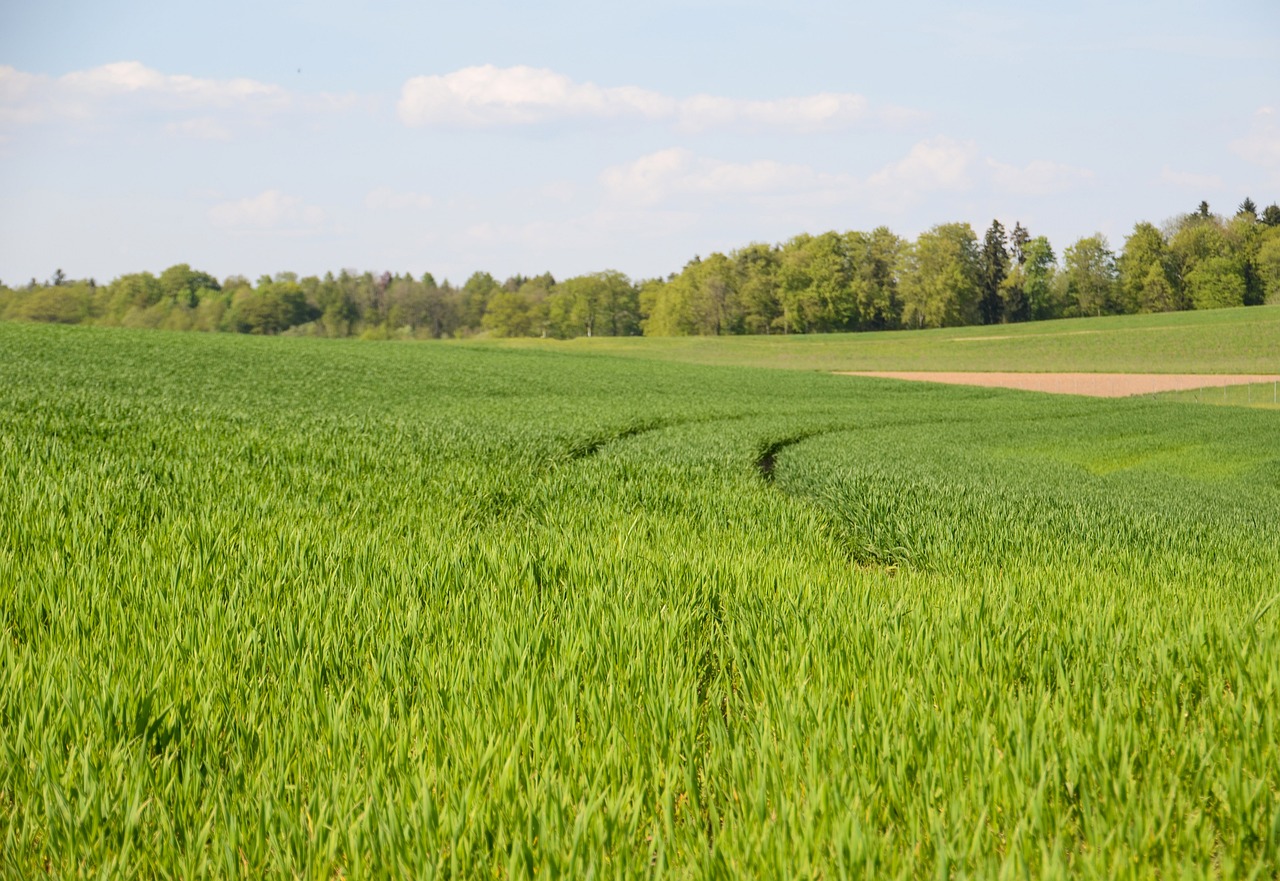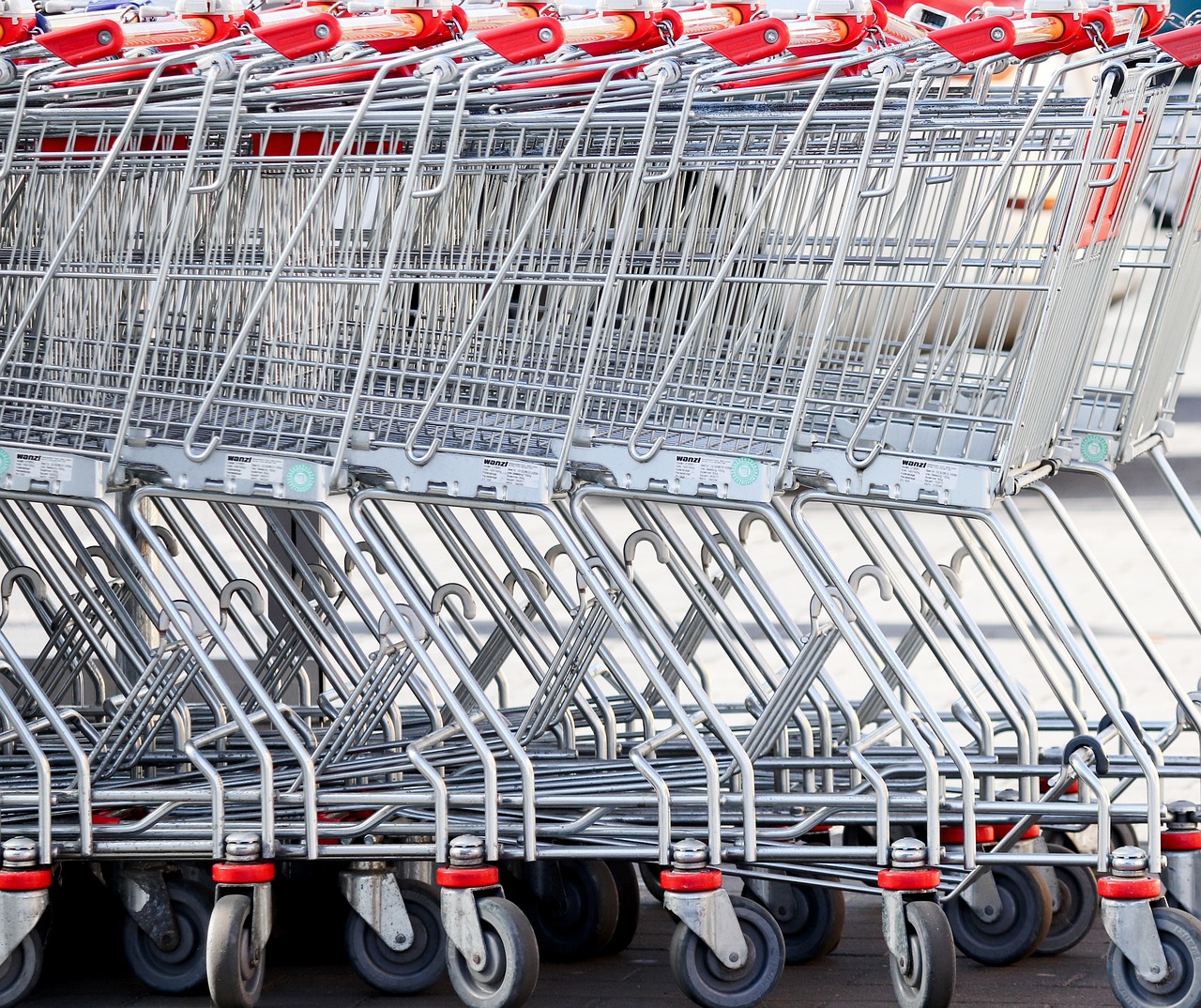Making Sustainable Choices - A Beginner's Guide to Green Shopping
In today's fast-paced world, where the consequences of our consumption choices are becoming increasingly apparent, the notion of sustainable shopping is gaining traction. But what does it really mean to shop sustainably? Essentially, it involves making purchases that are not only good for you but also beneficial for the planet. It's about being mindful of the impact our buying habits have on the environment and society. As we navigate through aisles filled with products, we have the power to choose items that align with our values and contribute to a healthier Earth. By embracing green shopping, we can take a stand against wastefulness and support practices that foster sustainability. So, let’s dive deeper into the world of sustainable shopping and uncover how we can all make a difference, one purchase at a time.
Sustainability is a broad concept that refers to practices aimed at meeting our current needs without jeopardizing the ability of future generations to meet theirs. It encompasses various dimensions, including environmental preservation, social equity, and economic viability. When it comes to consumer choices, understanding sustainability is crucial because every product we buy has a story behind it—where it comes from, how it was made, and the impact it has on our world. By making informed decisions, we can significantly reduce our ecological footprint and promote a more sustainable future. Imagine if every time you shopped, you considered not just your needs but also the well-being of the planet and its inhabitants. That’s the essence of sustainable shopping.
Green shopping is not just a trend; it’s a lifestyle choice that comes with a myriad of benefits. When we choose sustainable products, we are actively participating in a movement that aims to reduce our environmental impact, support local economies, and promote healthier lifestyles. Think about it: when you opt for organic produce or eco-friendly cleaning supplies, you're not only making a healthier choice for yourself but also for the planet. Here are some of the key advantages:
- Reduced Environmental Impact: By selecting eco-friendly products, you contribute to a decrease in pollution, resource depletion, and waste.
- Support for Local Economies: Purchasing from local businesses helps to strengthen your community and supports fair wages for workers.
- Healthier Lifestyle Choices: Many sustainable products are free from harmful chemicals, making them safer for you and your family.
Choosing sustainable products can significantly reduce carbon footprints and waste. The environmental benefits of opting for eco-friendly items are profound. For instance, consider the lifecycle of a product: from raw material extraction to manufacturing, transportation, and disposal. Each stage contributes to environmental degradation. By opting for sustainable products, you can help mitigate these effects. For example, products made from recycled materials or those that are biodegradable can drastically lower the amount of waste that ends up in landfills, which is a win-win for the planet.
Green shopping encourages minimizing waste through the purchase of reusable and recyclable products. Imagine if every plastic bag you used was replaced with a reusable one; the difference would be monumental! To reduce waste in your shopping habits, consider:
- Investing in reusable bags, bottles, and containers.
- Choosing products with minimal packaging.
- Composting organic waste to reduce landfill contributions.
These small changes can lead to significant positive effects on the environment.
Understanding how shopping choices affect carbon emissions is crucial in our quest for sustainability. Each product we buy has a carbon footprint associated with its production, transportation, and disposal. For example, locally-sourced foods typically have a much lower carbon footprint compared to imported goods. To make more sustainable consumption choices, consider:
- Shopping for seasonal and local produce.
- Reducing meat consumption, as livestock farming has a high carbon footprint.
- Choosing products from brands that prioritize sustainable sourcing and manufacturing practices.
When we purchase from ethical brands, we promote fair trade practices and social responsibility. This means supporting companies that are committed to sustainability and ethical labor practices. By choosing to spend your money on brands that prioritize people and the planet, you’re not just buying a product; you’re investing in a better world. Look for certifications like Fair Trade, B Corp, and organic labels to guide your choices.
Transitioning to a greener shopping habit doesn’t have to be overwhelming. Here are some practical tips to help you make more sustainable choices:
Before making purchases, it’s vital to research the sustainability practices of brands. Utilize resources like sustainability reports, consumer reviews, and third-party certifications to assess the environmental impact of products. This knowledge empowers you to make informed decisions that align with your values.
Buying from local businesses not only supports the community but also reduces transportation emissions. Local shopping is a powerful way to connect with your community while making environmentally conscious choices. Look for farmers' markets, local artisans, and shops that emphasize sustainability in their practices.
What is sustainable shopping?
Sustainable shopping involves making purchasing decisions that are environmentally friendly and socially responsible, supporting products and brands that prioritize sustainability.
How can I start shopping sustainably?
Start by researching brands, choosing local products, and opting for reusable items. Every small change contributes to a larger impact.
Why is supporting ethical brands important?
Supporting ethical brands promotes fair labor practices and sustainable sourcing, helping create a more equitable economy.

Understanding Sustainability
Sustainability is a buzzword that seems to be everywhere these days, but what does it really mean? At its core, sustainability refers to practices that meet our current needs without jeopardizing the ability of future generations to meet theirs. Imagine a beautiful forest. If we take care of it, it can provide us with clean air, water, and resources for years to come. However, if we exploit it without thought, we risk destroying it for ourselves and those who come after us. This analogy is a perfect representation of the importance of sustainable practices in our daily lives.
So, why should we care about sustainability? Well, our consumer choices have a profound impact on the environment. Every time we buy something, we are voting for the kind of world we want to live in. When we choose products that are made sustainably, we are not just benefiting ourselves; we are also contributing to a healthier planet. This means considering not just what we buy, but also how it was made, who made it, and how it will affect the environment throughout its life cycle.
The significance of making environmentally friendly decisions cannot be overstated. Our planet is facing numerous challenges, from climate change to resource depletion. By understanding sustainability, we can begin to make informed choices that support a more balanced and equitable world. Every small decision counts, and collectively, they can lead to significant positive change.
To illustrate the concept of sustainability in consumer choices, consider the following table that outlines the differences between traditional shopping and sustainable shopping practices:
| Aspect | Traditional Shopping | Sustainable Shopping |
|---|---|---|
| Resource Use | High consumption of non-renewable resources | Focus on renewable resources and minimal waste |
| Production Methods | Often exploitative labor practices | Ethical labor and fair trade practices |
| Environmental Impact | High carbon emissions and pollution | Reduced carbon footprint and pollution |
| Community Support | Supports large corporations | Supports local businesses and economies |
In summary, understanding sustainability is not just about making a single change; it’s about embracing a lifestyle that respects the planet and its resources. By being mindful of our choices and their impacts, we can foster a sustainable future that benefits everyone. So, the next time you're out shopping, ask yourself: "Is this purchase contributing to a better world?" Your choices matter, and they can create ripples of change.
- What is sustainability? Sustainability refers to practices that meet present needs without compromising future generations' ability to meet theirs.
- Why is green shopping important? Green shopping helps reduce environmental impact, supports local economies, and promotes healthier lifestyles.
- How can I start green shopping? Begin by researching products, choosing local options, and supporting ethical brands.

Benefits of Green Shopping
Green shopping is not just a trend; it’s a lifestyle choice that comes with a plethora of benefits for both individuals and the planet. By opting for sustainable products, you’re not only making a conscious decision to protect the environment but also enhancing your overall quality of life. Imagine walking into a store and knowing that every item you choose contributes to a healthier planet. Sounds rewarding, right? Let’s dive into some of the incredible benefits of green shopping.
One of the most significant advantages of green shopping is its reduced environmental impact. When you choose eco-friendly products, you're actively participating in the fight against climate change. For instance, sustainable items often require fewer resources to produce, which translates to less energy consumption and lower carbon emissions. This means that each purchase you make can help shrink your carbon footprint and contribute to a more sustainable future.
Additionally, green shopping supports local economies. By purchasing from local businesses that prioritize sustainability, you're not just helping the environment; you're also boosting your community. Local businesses tend to have a smaller carbon footprint compared to large corporations due to reduced transportation distances. This not only fosters a sense of community but also encourages the growth of ethical practices within your local economy.
Moreover, green shopping often leads to healthier lifestyle choices. Many sustainable products are made from natural ingredients and materials, which means fewer harmful chemicals in your home and body. Think about it: when you buy organic food or eco-friendly cleaning supplies, you’re investing in your health and well-being. It’s like choosing to nourish your body with wholesome food rather than processed junk. The benefits extend beyond just you; they also promote a healthier environment for everyone.
Here’s a quick overview of how green shopping benefits you and the planet:
| Benefit | Description |
|---|---|
| Reduced Environmental Impact | Lower carbon emissions and resource consumption. |
| Support for Local Economies | Boosts community businesses and ethical practices. |
| Healthier Lifestyle Choices | Fewer harmful chemicals and better quality products. |
In conclusion, the benefits of green shopping are vast and impactful. By making informed choices, you’re not only enhancing your own life but also contributing to a healthier planet for future generations. So, the next time you shop, consider the larger picture. Are you ready to make a difference with your purchasing power?
- What is green shopping? Green shopping refers to purchasing products that are environmentally friendly and sustainable.
- How does green shopping benefit the environment? It reduces waste, lowers carbon footprints, and promotes the use of renewable resources.
- Can green shopping save me money? While some eco-friendly products may have a higher upfront cost, they often save money in the long run through durability and reduced health costs.
- How can I start green shopping? Begin by researching products, supporting local businesses, and prioritizing sustainable brands.

Environmental Impact
When we talk about green shopping, we’re diving into a world where our choices can create ripples of positive change for the environment. Every time you decide to purchase a product, you're not just buying an item; you're casting a vote for the kind of world you want to live in. This is where understanding the environmental impact of our shopping habits becomes crucial. By choosing sustainable products, we can significantly reduce our carbon footprints and minimize waste, leading to a healthier planet for future generations.
Let’s break it down a bit. The products we choose to buy often have a lifecycle that includes raw material extraction, manufacturing, transportation, and disposal. Each of these stages contributes to environmental degradation—think of it as a chain reaction. For example, the production of conventional clothing can involve toxic chemicals, excessive water use, and pollution. In contrast, opting for sustainable clothing made from organic materials can drastically lessen these impacts. Here’s how:
- Reduced Resource Consumption: Sustainable products often require fewer resources to produce, which means less strain on our planet's finite materials.
- Lower Emissions: By supporting brands that prioritize eco-friendly manufacturing processes, we contribute to a significant reduction in greenhouse gas emissions.
- Waste Minimization: Sustainable products are often designed to be reused or recycled, which helps keep waste out of landfills.
Now, let’s talk numbers. According to a study by the Environmental Protection Agency (EPA), if every American recycled just one-tenth of their newspapers, we could save about 25 million trees each year. Imagine the impact if we all took a step further and made sustainable choices in every aspect of our shopping! The potential to reduce our environmental impact is staggering.
Moreover, the transportation of goods plays a significant role in their overall carbon footprint. Products that are sourced locally not only support the local economy but also drastically cut down on the emissions generated from long-distance transportation. For instance, buying fruits and vegetables from a local farmer's market not only provides you with fresher produce but also reduces the carbon emissions associated with transporting food across the country or even internationally. It’s a win-win!
In conclusion, making informed and conscious shopping choices is not just a trend; it's a necessity for the well-being of our planet. By understanding the environmental impacts of our purchases, we can contribute to a more sustainable future. So next time you’re out shopping, remember: every choice counts, and together, we can create a greener world.
Q: What are some easy ways to start green shopping?
A: Start by researching brands, choosing local products, and opting for items with minimal packaging. Every small step counts!
Q: Are sustainable products more expensive?
A: While some sustainable products may have a higher upfront cost, they often save you money in the long run through durability and reduced waste.
Q: How can I find local sustainable options?
A: Look for local farmers' markets, community-supported agriculture (CSA) programs, or eco-friendly stores in your area.

Waste Reduction
When it comes to , the mantra is simple: less is more. In our fast-paced world, it’s easy to get caught up in the cycle of consumption, but embracing green shopping practices can help us break free from this cycle. By opting for reusable and recyclable products, we not only lessen the burden on landfills but also contribute to a more sustainable future. Imagine a world where single-use plastics are a thing of the past and reusable bags, bottles, and containers are the norm. Sounds refreshing, right?
One of the most effective strategies for waste reduction is to invest in quality over quantity. Instead of buying cheap, disposable items that will end up in the trash within weeks, consider purchasing durable products that stand the test of time. For instance, a sturdy stainless-steel water bottle may cost a bit more upfront but will save you money and reduce waste in the long run. It’s like planting a seed; the initial investment yields a bountiful harvest of benefits.
Another key aspect of waste reduction is to embrace minimalism. This doesn’t mean you have to live with only the bare essentials, but rather, it encourages you to be intentional about what you bring into your home. Ask yourself, “Do I really need this?” before making a purchase. This simple question can lead to more mindful shopping habits and a significant decrease in waste.
Additionally, consider implementing the “Three R’s” in your shopping habits: Reduce, Reuse, and Recycle. Here’s how you can incorporate these principles:
- Reduce: Cut down on unnecessary purchases. Focus on items that are essential and beneficial.
- Reuse: Opt for products that can be used multiple times. For example, choose glass containers over plastic ones for food storage.
- Recycle: Make sure to recycle items whenever possible. Familiarize yourself with your local recycling guidelines to ensure proper disposal.
Moreover, many brands are now offering refillable options for their products, from cleaning supplies to personal care items. This not only reduces packaging waste but also encourages consumers to think critically about their consumption habits. By choosing refillable products, you’re not just reducing waste; you’re also supporting brands that prioritize sustainability.
In conclusion, waste reduction is not just a personal choice; it’s a collective responsibility. Every small action counts, and when we all commit to making smarter shopping decisions, we contribute to a healthier planet. So the next time you’re out shopping, take a moment to consider how your choices can lead to a significant reduction in waste. Together, we can make a difference!
Q: What are some easy ways to start reducing waste in my shopping habits?
A: Start by using reusable bags, choosing products with minimal packaging, and opting for bulk items. Additionally, consider buying second-hand when possible.
Q: How can I find out if a brand is truly sustainable?
A: Look for certifications such as Fair Trade, Organic, or B Corp. Research the brand’s practices online and read reviews from other consumers.
Q: What should I do with items I no longer need?
A: Consider donating, recycling, or selling items. Many local charities accept gently used goods, and online platforms allow you to sell or swap items with others.

Carbon Footprint
Understanding our is crucial in today’s world, where every shopping choice can either contribute to environmental degradation or help heal our planet. When we talk about carbon footprints, we refer to the total amount of greenhouse gases, specifically carbon dioxide, that are emitted directly or indirectly by our actions, particularly in consumption. Think of it like a shadow that follows you around, growing larger with every purchase you make. The products we buy, from the food on our plates to the clothes we wear, all have a hidden carbon cost associated with their production, transportation, and disposal.
For instance, consider the journey of a simple cotton t-shirt. It begins with the farming of cotton, which often requires substantial water and chemical inputs. Then, it travels to factories, where it undergoes processing and dyeing, processes that are energy-intensive and can release harmful pollutants. Finally, it makes its way to retail stores and, eventually, to your closet. Each step in this journey adds to the t-shirt's carbon footprint. By being aware of these processes, you can make choices that significantly reduce your impact on the environment.
To further illustrate this point, let’s take a look at a comparison of the carbon footprints of different shopping choices:
| Product Type | Average Carbon Footprint (kg CO2e) |
|---|---|
| Locally sourced vegetables | 0.5 |
| Imported fruits | 2.0 |
| Cotton t-shirt (conventional) | 2.5 |
| Organic cotton t-shirt | 1.5 |
| Fast fashion garment | 3.0 |
As you can see from the table, the carbon footprint of products can vary greatly based on their sourcing and production methods. By choosing locally sourced and organic products, you not only support sustainable practices but also contribute to a lower carbon footprint. Additionally, the transportation of goods plays a significant role in their overall carbon emissions. Products that travel long distances contribute to a larger carbon footprint due to the fuel consumption involved in their shipping.
To minimize your carbon footprint while shopping, consider these strategies:
- Opt for local: Whenever possible, choose products that are grown or manufactured nearby.
- Buy in bulk: This reduces packaging waste and often lowers the carbon cost per unit.
- Embrace second-hand: Thrift shopping or buying used items can drastically cut down on the demand for new products.
In conclusion, being mindful of our carbon footprint is a powerful way to make a difference through our shopping choices. By understanding the impact of our purchases and opting for more sustainable alternatives, we contribute to a healthier planet for future generations. Remember, every small change counts, and together, we can create a ripple effect that leads to significant environmental benefits.
Q: What is a carbon footprint?
A: A carbon footprint is the total amount of greenhouse gases emitted directly or indirectly by an individual, organization, event, or product, usually measured in units of carbon dioxide equivalent (CO2e).
Q: How can I reduce my carbon footprint when shopping?
A: You can reduce your carbon footprint by choosing locally sourced products, buying in bulk, opting for second-hand items, and supporting brands that prioritize sustainability.
Q: Does buying organic really make a difference?
A: Yes, buying organic often results in lower carbon emissions, as organic farming practices typically use fewer synthetic fertilizers and pesticides, and many organic products are sourced locally.
Q: Are there tools to help me measure my carbon footprint?
A: Yes, there are several online calculators and apps available that allow you to input your shopping habits and lifestyle choices to estimate your carbon footprint.

Supporting Ethical Brands
When it comes to making sustainable choices, one of the most impactful steps you can take is to support ethical brands. These companies prioritize not just profit, but also the well-being of their workers, communities, and the environment. Imagine walking into a store and knowing that every purchase you make is a vote for a better world. That’s the power of supporting brands that align with your values!
But what exactly defines an ethical brand? Typically, these brands are committed to fair trade practices, which means they pay fair wages to their workers and ensure safe working conditions. They also focus on using sustainable materials and environmentally friendly production methods. By choosing to buy from these companies, you're not just acquiring a product; you're contributing to a larger movement that seeks to create a more equitable and sustainable economy.
Here are some key reasons why supporting ethical brands matters:
- Promotes Fair Labor Practices: Ethical brands often provide fair wages and safe working conditions, ensuring that workers are treated with respect.
- Encourages Sustainable Practices: Many of these companies prioritize eco-friendly materials and processes, reducing their environmental impact.
- Supports Local Economies: Ethical brands often source materials locally or produce their goods in the communities they serve, which helps boost local economies.
Moreover, supporting ethical brands fosters a sense of community. When you buy from these companies, you're likely to find a connection between the products and the stories behind them. For instance, a locally made scarf might be crafted by artisans who have honed their skills over generations. By purchasing that scarf, you're not just buying a piece of fabric; you're investing in a tradition and supporting the livelihoods of those artisans.
To make informed choices, consider looking for certifications such as Fair Trade, Organic, and Certified B Corporation. These labels can help you identify brands that adhere to high ethical standards. Additionally, many websites and apps can guide you in discovering ethical brands, making it easier to shop with your values in mind.
In a world where consumer choices can either harm or heal, supporting ethical brands is a powerful way to drive change. It’s about more than just shopping; it’s about making a statement. By choosing to invest in brands that prioritize ethical practices, you become a part of a community that values sustainability, fairness, and social responsibility. So next time you're out shopping, remember: your choices matter, and they can ripple out to create a significant impact on our planet!
Q: How can I find ethical brands?
A: Look for certifications such as Fair Trade, Organic, and B Corporation. Additionally, there are many online resources and apps that can help you identify ethical brands.
Q: Are ethical products more expensive?
A: While some ethical products may have a higher upfront cost, they often provide better quality and longevity, making them a worthwhile investment in the long run.
Q: What if I can't find ethical brands in my area?
A: Consider shopping online, where you can access a wider range of ethical brands. Many companies offer shipping options that are eco-friendly as well.

Tips for Green Shopping
Embarking on the journey of green shopping can feel a bit overwhelming at first, but don't worry! With a few simple tips, you'll be well on your way to making sustainable choices that benefit both you and the planet. First off, it’s essential to research products before you buy. This means taking a moment to look into the brands you’re considering. Are they committed to sustainable practices? Do they use eco-friendly materials? Websites like GoodGuide and Environmental Working Group can be incredibly helpful in providing insights into the environmental impact of various products. By doing a little homework, you can make informed decisions that align with your values.
Another great tip is to shop locally. Not only does this support your community, but it also significantly reduces transportation emissions. When you buy from local farmers' markets or small businesses, you’re not just getting fresher products; you’re also cutting down on the carbon footprint associated with transporting goods over long distances. Plus, it’s a fantastic way to connect with your community and discover unique products that you might not find in big box stores.
When it comes to making purchases, consider the packaging as well. Opt for products that use minimal, recyclable, or biodegradable packaging. This small change can lead to a significant reduction in waste. Many brands are now making a conscious effort to reduce their packaging, so keep an eye out for those that prioritize sustainability. For instance, look for items packaged in glass or cardboard instead of plastic. Not only are these materials often more eco-friendly, but they can also be recycled more easily.
Additionally, think about your shopping habits. Instead of making impulse buys, create a shopping list before you head out. This not only helps you stick to your budget but also ensures you only buy what you need, reducing waste. When you have a list, you're less likely to get sidetracked by flashy promotions or unnecessary items. This practice can be compared to navigating a ship through stormy seas; having a clear course helps you avoid getting lost in the waves of consumerism.
Lastly, consider joining or supporting a community supported agriculture (CSA) program. These programs allow you to buy a share of a farm’s harvest, which means you’re getting fresh, seasonal produce while also supporting local agriculture. It’s a win-win situation! Not only do you get delicious fruits and vegetables, but you also contribute to a more sustainable food system.
- What are some easy swaps I can make for greener shopping? Consider switching to reusable bags, buying bulk items to reduce packaging, or choosing second-hand products.
- How can I find out if a brand is truly sustainable? Look for certifications like Fair Trade, Organic, or B Corporation, and check their website for sustainability reports.
- Are there any apps that can help me shop sustainably? Yes! Apps like EarthHero and Buycott can help you track the sustainability of products and brands.

Researching Products
When it comes to making sustainable choices, is your best friend. It’s like being a detective in a world full of options, where every item has a story to tell. Before you whip out your wallet, take a moment to dig into the sustainability practices of the brands you’re considering. This isn’t just about picking the prettiest packaging; it’s about understanding the impact your purchases have on the planet.
Start by looking for certifications that indicate a product’s eco-friendliness. For instance, labels like Fair Trade, USDA Organic, and Energy Star can guide you toward brands that prioritize ethical practices and sustainability. These certifications often require companies to adhere to strict environmental and social standards, ensuring that your purchase supports responsible practices. You can create a simple table to compare these certifications:
| Certification | Description |
|---|---|
| Fair Trade | Ensures fair wages and working conditions for producers. |
| USDA Organic | Indicates products made without synthetic fertilizers or pesticides. |
| Energy Star | Identifies energy-efficient appliances and products. |
In addition to certifications, consider using online resources and databases that track company practices. Websites like GoodGuide and Environmental Working Group provide in-depth information about various products and their environmental impact. These platforms can help you make informed decisions by offering ratings based on health, environmental, and social criteria.
Don’t forget about the power of reviews! Consumer feedback can be incredibly insightful. Look for reviews that mention sustainability and ethical practices, as these will give you a clearer picture of how a product performs in real life. It’s like getting a sneak peek into someone else’s shopping experience before you dive in.
Lastly, engage with the brands directly. Many companies are eager to share their sustainability journey. Reach out through social media or their websites to ask questions about their sourcing, production methods, and overall commitment to sustainability. This not only helps you gather valuable information but also encourages brands to prioritize transparency.
In summary, researching products before you buy is crucial for making sustainable choices. By leveraging certifications, online resources, consumer reviews, and direct communication with brands, you can confidently select items that align with your values and contribute to a healthier planet.
- What are some reliable certifications to look for? Look for Fair Trade, USDA Organic, and Energy Star certifications.
- How can I find sustainable brands? Use resources like GoodGuide and EWG to research brands and their practices.
- What should I consider when reading product reviews? Focus on reviews that mention sustainability and ethical practices.

Shopping Locally
When it comes to making sustainable choices, is one of the most impactful decisions you can make. Imagine stepping into a vibrant farmer's market, surrounded by the buzz of local vendors and the fresh aroma of organic produce. This experience not only supports your community but also helps to minimize your carbon footprint. By purchasing goods from nearby businesses, you significantly reduce the distance products travel, which in turn lowers transportation emissions. It's like choosing to walk to a friend's house instead of taking a long drive; the shorter the distance, the less energy consumed!
Supporting local businesses fosters a sense of community and helps keep money circulating within your area. Did you know that for every $100 spent at a local business, approximately $68 stays in the community, compared to only $43 when spent at a non-local business? This is a powerful way to strengthen local economies and create jobs. Additionally, local businesses often provide unique products that you won't find in big-box stores, allowing you to discover one-of-a-kind items and support artisans and craftspeople.
However, shopping locally goes beyond just the economic benefits. It also supports sustainable practices. Many local producers prioritize eco-friendly methods, whether it's organic farming, sustainable fishing, or ethical sourcing. By choosing to buy from these businesses, you align your purchasing habits with your values, contributing to a healthier planet. It's like planting a seed of change; each local purchase nurtures the roots of sustainability and ethical practices.
To make the most of your local shopping experience, consider these tips:
- Explore local farmers' markets for fresh produce and artisanal goods.
- Visit neighborhood boutiques that offer handmade or eco-friendly products.
- Engage with local restaurants that source their ingredients from nearby farms.
- Utilize online platforms that connect consumers with local sellers.
Incorporating local shopping into your routine can be a fun and rewarding adventure. It encourages you to discover the hidden gems in your community while making a positive impact on the environment. So next time you're about to make a purchase, ask yourself: Can I find this locally? Your choices can ripple out, creating waves of change that benefit not just you, but the entire planet.
Q: Why is shopping locally better for the environment?
A: Shopping locally reduces transportation emissions, supports sustainable practices, and minimizes packaging waste.
Q: How can I find local businesses to shop at?
A: You can search online for local directories, visit farmers' markets, or ask friends and neighbors for recommendations.
Q: What types of products can I buy locally?
A: You can find a wide range of products, including fresh produce, handmade crafts, clothing, and locally sourced food items.
Q: Are local products more expensive than those from big retailers?
A: While some local products may be slightly more expensive, they often reflect the quality and sustainability of the production process. Plus, you're investing in your community!
Frequently Asked Questions
- What is sustainable shopping?
Sustainable shopping refers to the practice of purchasing products that are environmentally friendly, ethically made, and socially responsible. It involves making choices that minimize harm to the planet and support fair labor practices.
- Why should I consider green shopping?
Choosing to shop sustainably benefits not only the environment but also your health and local economy. By opting for eco-friendly products, you help reduce pollution, conserve resources, and promote ethical consumption, leading to a healthier planet for future generations.
- How does green shopping reduce my carbon footprint?
Green shopping helps lower your carbon footprint by encouraging the purchase of local, seasonal, and sustainably produced goods. This reduces transportation emissions and resource consumption, making a positive impact on the environment.
- What are some tips for researching sustainable products?
When researching sustainable products, look for certifications like Fair Trade, Organic, or B Corp. Check brand websites for their sustainability practices, read reviews, and use apps that provide information on the environmental impact of various products.
- How can shopping locally contribute to sustainability?
Shopping locally reduces transportation emissions and supports your community's economy. Local businesses often source materials closer to home, which minimizes the environmental impact and helps you find unique, sustainable products.
- What types of products should I look for when green shopping?
When green shopping, prioritize products that are reusable, recyclable, and made from sustainable materials. Look for items that are free from harmful chemicals, have minimal packaging, and are produced by ethical brands committed to sustainability.
- Can I find sustainable options for everyday items?
Absolutely! Many everyday items, such as cleaning supplies, personal care products, and clothing, have sustainable alternatives. Look for brands that focus on eco-friendly materials and ethical production methods.
- Is green shopping more expensive than traditional shopping?
While some sustainable products may have a higher upfront cost, they often provide better quality and longevity, saving you money in the long run. Additionally, investing in eco-friendly items supports practices that benefit the environment and society.



















